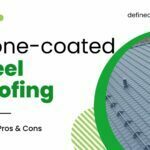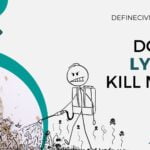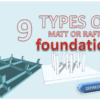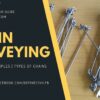Whether you’ve discovered spiders, roaches, ants, termites, or another pest in your home, addressing them promptly is crucial to prevent the infestation from worsening. The dilemma arises: should you handle it yourself or seek professional assistance?
Table of Contents
- Size of the Infestation
- Cost
- Convenience
- Safety
- Guarantee
- Effectiveness
- The DIY approach
- Consider these factors for selection of the right choice
- Hybrid Strategy
- The Hazards of DIY Pest Control
- Potential Harm to Pets and Children
- Potential Damage to Furniture and Structures
- Long-Term Effects of Chemical-Based Pest Control
- Common DIY Pest Control Mistakes
- The bottom line

Size of the Infestation
Determining the scale of your infestation is key. For minor issues like a few stray ants or wasps, DIY methods often suffice. Various approaches such as traps, store-bought pesticides, and homemade remedies can be effective if implemented correctly. However, these DIY solutions may only address the immediate problem and not the underlying cause, leading to recurring issues. If pests persist despite DIY efforts, it may be time to engage a professional to tackle the root of the problem, especially for larger swarms.
Cost
While initial costs for professional services are higher compared to DIY solutions, continually trying various DIY methods can accumulate expenses. Considering the effectiveness of DIY approaches versus professional intervention is crucial to avoid unnecessary costs.
Convenience
DIY pest control offers convenience with easy access to products, often available in local stores or using household items. However, professional services like Rat exterminators Charleston SC handle logistics, ensuring correct product usage and eliminating the need for equipment management.
Safety
DIY products may contain harsh chemicals, posing risks if used improperly. Professional services like https://www.miceexterminator.org/ prioritize safety, minimizing health hazards for you and your household. DIY enthusiasts preferring natural products can control what enters their homes, utilizing substances like essential oils, vinegar, or natural remedies.
Guarantee
DIY products may lack guarantees on effectiveness, unlike professional services that often provide service guarantees ensuring return visits if pests reappear.
Effectiveness
DIY methods are effective for minor pest issues but may not suffice for larger infestations. Professional services are more likely to effectively address significant infestations.
Here’s a summary;
| Aspect | DIY Pest Control | Professional Pest Control |
|---|---|---|
| Cost | Lower upfront cost | Higher initial cost, potential long-term savings |
| Effectiveness | Varies based on product and application | Generally higher due to professional-grade products |
| Convenience | Readily available, easy to use | Requires scheduling, may involve waiting for appointments |
| Expertise | Relies on homeowner knowledge and skills | Utilizes trained professionals with specialized knowledge |
| Coverage | Limited to DIY product range | Broad coverage, tailored solutions for specific pests |
| Safety | Requires proper handling and precautions | Professionals trained in safe application and handling |
| Flexibility | Can customize application based on needs | Follows industry standards, less flexibility in customization |
| Long-Term Results | May provide temporary relief, may require frequent treatments | Offers more sustainable solutions, potentially longer-lasting results |
| Time Investment | Can be time-consuming for larger infestations | Efficient and timely application by professionals |
| Risk of Misapplication | Potential for errors in application or product choice | Minimized risk due to professional training and experience |
The DIY approach
When it comes to dealing with pests in your home, doing something is better than doing nothing.
When it comes to treating your home, there are four key areas that you’re going to want to focus on: the interior and exterior perimeter of the home, the garage, cracks and crevices along the house that will allow entry points for pests, and the yard.
Treating the interior and exterior perimeter of your home, one of the more popular products you can get from Home Depot or Lowe’s is Ortho Home Defense. This product is made of bifenthrin, which can last up to 12 months inside the home. However, outside the home, due to UV heat and sun rays, it breaks down in about two to three weeks, requiring more frequent reapplication for exterior perimeter protection.
For the interior perimeter, provide a four-inch band around doors, window sills, corners of the baseboards, and underneath kitchen and bathroom cabinets. For the exterior perimeter, create a 12-inch barrier using Ortho Home Defense, coating it evenly to overlap and provide thorough protection.
As a home shifts and settles, cracks and crevices along the foundation open up, allowing access points for bugs. Use a dusting product like diatomaceous earth to fill in these crevices, preventing pests from reaching the interior of the house.
The garage is an easy access point for pests. Monitor and trap any pests trying to invade through the garage using basic glue boards placed strategically to catch and monitor pest activity.
Most pests come from the yard. Provide a thorough yard treatment with products like Andro Quick Kill, covering general pests up to and including fire ants. Apply evenly using a grass seed spreader for long-lasting protection.
To thoroughly treat your home using these DIY products, you’ll need about ten bags of Andro Quick Kill for the yard, one bottle of diatomaceous earth for entry points, and 6 to 7 gallons of Ortho Home Defense for interior and exterior perimeter barriers. This totals around $186, offering protection for the next three months.
Although these DIY products are convenient to use, but they won’t last for long in comparison to the professional pest control services. So, it’s best that you consider such aspects in mind while deciding your course of action.
Consider these factors for selection of the right choice
- Type and Severity of Pest Infestation – It’s crucial to evaluate the type and severity of the pest issue. Minor or common pests might be manageable with do-it-yourself (DIY) methods, whereas severe or complex infestations may require professional intervention.
- Personal Time and Skills – Take into account your availability, expertise, and comfort level in dealing with pests independently. DIY approaches demand commitment, research, and ongoing supervision.
- Potential Risks and Consequences – Assess the potential risks associated with the pest problem, such as property damage or health hazards. Severe infestations or pests with hazardous characteristics might necessitate professional help.
Hybrid Strategy
Sometimes, a hybrid strategy proves effective. Homeowners can adopt preventive measures and basic DIY techniques to reduce the risk of infestations while enlisting professional support for inspections, targeted treatments, or complex infestations.
The Hazards of DIY Pest Control
- Inadequate Eradication – DIY methods may not completely eradicate the pest population, leading to recurring or worsening infestations over time.
- Delayed Professional Help – If DIY efforts fail, valuable time could be lost before seeking professional assistance, allowing the infestation to escalate.
- Health Risks – Improper handling of pest control products or insufficient protective measures can pose health hazards to those applying DIY treatments.
- Environmental Impact – Incorrect use or disposal of DIY methods and products can harm the environment and non-target organisms.
Potential Harm to Pets and Children
Yes, DIY pest control methods can endanger the well-being of pets and children if not used correctly. Exposure to chemicals or misuse of products can result in poisoning or adverse reactions. Pets and children might accidentally encounter treated areas or consume contaminated substances, leading to potential harm. Strict adherence to product instructions, keeping pets and children away from treated zones, and securely storing pest control items out of their reach are crucial safety measures.
Potential Damage to Furniture and Structures
Improper application of DIY pest control methods, especially with chemical-based products, can harm furniture or structures. Excessive use or incorrect dilution of chemicals can cause stains, discoloration, or deterioration of surfaces. Carefully reading and following product instructions can prevent damage to belongings or property.
Long-Term Effects of Chemical-Based Pest Control
Improper or excessive use of chemical-based pest control products can have enduring effects on the environment and may harm beneficial organisms. These products could also contribute to pesticide resistance in pests over time, reducing their effectiveness. Using chemical-based products judiciously, following recommended dosages and safety precautions, is vital to minimize potential long-term effects.
Common DIY Pest Control Mistakes
- Inadequate Pest Identification – Misidentifying pests can lead to ineffective treatments.
- Overreliance on DIY Methods – Underestimating infestation severity or lack of expertise can result in inadequate control efforts.
- Misapplication of Products – Improper mixing or application can lead to ineffective treatments or harm to health and the environment.
- Lack of Follow-up – Neglecting preventive measures or follow-up treatments can lead to recurring pest issues.
To minimize risks and ensure effective pest control, consulting professional providers with expertise, access to specialized products, and equipment is often recommended. Professionals can accurately identify pests, assess infestation severity, and develop targeted treatment plans, effectively eradicating pests while minimizing risks to health and the environment.
The bottom line
In summary, consider the scale of your pest problem, cost implications, convenience, safety concerns, and the guarantee of effectiveness when deciding between DIY and professional pest control.
















